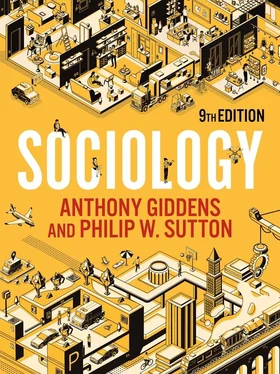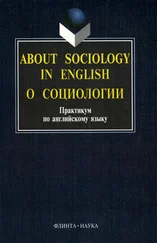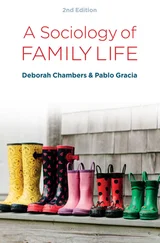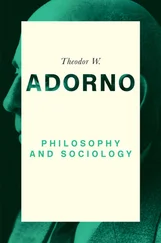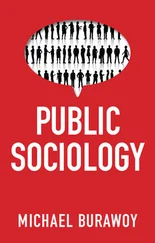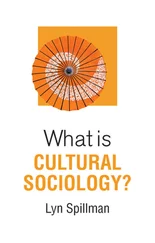Individuals also tend to make the assumption that everyone thinks in much the same way as they do and that they can safely forget about problems of interpersonal communication. Once assumptions of this kind become internalized, they are sedimented below the surface of conscious existence, forming the basis of the natural attitude. In this way, people experience important aspects of the social world, such as language and culture, as objective and external to themselves, and ‘society’ (as Durkheim suggested) is taken as a thing-like entity, separate from the individual. Phenomenology has not had the same impact on sociology as some of the other perspectives, though it did give rise to ethnomethodology.
Ethnomethodology – the systematic study of the methods used by ‘natives’ (members of a particular society) to construct their social worlds – is a third interactionist perspective. Its roots can be traced back to phenomenological philosophy, but it rose to prominence only in the 1960s with the research studies of Harold Garfinkel (1917–2011) and Aaron Cicourel (1928–). Ethnomethodologists were highly critical of mainstream sociology, particularly Parsonian structural functionalism, which Garfinkel thought treated people as if they were ‘cultural dopes’ – passive recipients of society’s socializing agents – rather than creative actors. Garfinkel also took issue with Durkheim’s famous statement that sociologists should ‘treat social facts as things’. For Garfinkel, this should be the starting point for inquiry, not assumed in advance of it. Ethnomethodology seeks to uncover just how social facts are created by society’s members and come to have that thing-like quality, and much of its analysis is of conversation, which sets ethnomethodology apart from other interactionist sociologies.

Ethnomethodology is discussed more widely in chapter 12, ‘Social Interaction and Daily Life’.
In contrast to many other actor-oriented perspectives, the work of Max Weber explores both individual actions and social structures. Although he was certainly interested in social interactions and the micro level of social life, his work on world religions, economic sociology and legal systems was historically informed, strongly comparative and concerned with the overall development and direction of societies. This is in contrast to the interactionist tradition as it developed after Weber, which became focused much more on the micro level of social life. The approaches in this section illustrate a basic difference in classical sociology between micro-level and structural (or macro-level) perspectives, which remains one of sociology’s longstanding theoretical divides.
Challenging mainstream sociology
The question of the continuing relevance of sociology’s three broad traditions has come into sharper focus as theoretical challenges have emerged. Some of these have transformed the discipline while others are in the process of doing so today. In this section we briefly outline some important criticisms of sociology from the standpoint of feminism, which stresses sociological theory’s previous neglect of the experience of women. We then cover ideas rooted in postmodern and poststructural theory and end the section with postcolonial theories, which focus on the inherent Eurocentric bias within most social and sociological theories.
Feminism against malestream sociology
The accepted founders of sociology were all men (as we saw in chapter 1), and they paid scant regard either to the differential experience of men and women or to gender relations. In any event, their ideas tended to be descriptive and theoretically unsatisfactory. For example, differences between women and men are discussed occasionally in Durkheim’s writings, but not in a consistently sociological manner (Rahman and Jackson 2010: 56). Durkheim (1952 [1897]) suggested that, while men are ‘almost entirely’ products of society, women are ‘to a far greater extent’ products of nature, leading to differing bases for identities, tastes and inclinations. Sociologists today do not accept this stereotypical conclusion, which illegitimately essentializes female identities.
Marx and Engels’s ideas are substantially at odds with those of Durkheim. For them, differences in power and status between men and women mainly reflect other divisions, especially class divisions. According to Marx, in the earliest forms of human society (primitive communism), neither gender nor class divisions were present. The power of men over women came about only as class divisions appeared. Women then came to be seen as a type of ‘private property’, owned by men through the institution of marriage. The only way for women to be freed from their situation of bondage would be when capitalism is overthrown and class divisions are eliminated.
Again, few sociologists today would accept this analysis. Class is not the only factor shaping social divisions which affect relations between men and women; among others are ethnicity and cultural background. For instance, it might be argued that women in some minority ethnic groups have more in common with men in that group than they do with women in the ethnic majority. In recent years, sociologists have become much more interested in intersectionality – the ways in which divisions of class, gender and ethnicity combine or ‘intersect’ to produce complex forms of social inequality (Brewer 1993; P. H. Collins 2000). Intersectionality does not mean the end of class analysis, but it does point to the need for more research which crosses conventional theoretical boundaries.
Since it left very little to build on in relating issues of gender to more established forms of theoretical thinking, the classical legacy bequeathed a difficult problem to sociologists. How should ‘gender’ as a general category be brought within existing sociological theories? The issues involved here are important and bear directly on the challenge that feminist scholars have laid down. There is no real dispute that a great deal of sociology in the past either ignored women or operated with an inadequate understanding of gender relations. Yet bringing the study of women into sociology is not the same as dealing with issues of gender, because gender concerns relations between women and men. For example, research into gender has explored changing forms of masculinity as well as femininities, and, with the emergence of queer theory, the instability of the concept of gender itself has been exposed.
The next section presents a fairly brief outline of the impact of feminist theorizing on sociology, but an extended discussion of gender can be found in chapter 7, ‘Gender and Sexuality’. Taken together, these sections provide an introduction to the significance of gender in society and for sociology.
Women’s movements in the 1960s and 1970s campaigned for many legislative changes aimed at tackling the unequal position of women in society. Once feminist scholars became part of the academy within universities, feminist theories challenged male-dominated or malestream sociology. The latter involved a perceived male bias in sociological theorizing that drew general conclusions from the experience of men – research methods that were not designed to capture women’s experience. Sociology’s subject matter, which focused on the (male-dominated) public sphere, ignored the perceived female-oriented private sphere of households and families. One feminist slogan of the time was ‘the personal is political’, and, as such, previously considered private matters became legitimate subjects for sociology.
Читать дальше
